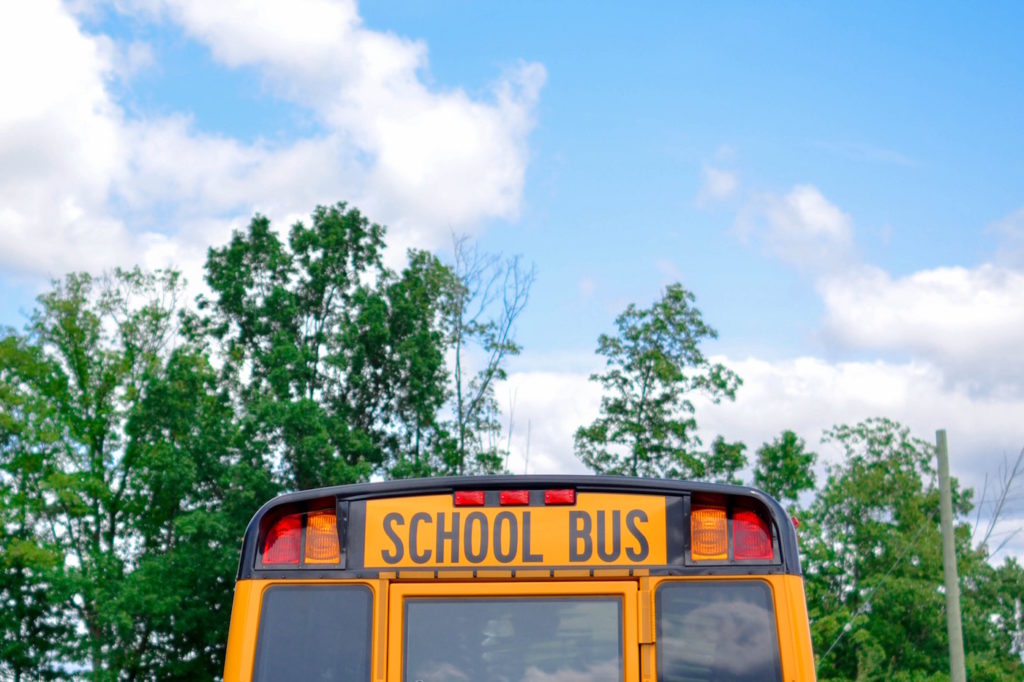In the preamble to his “Bill for the More General Diffusion of Knowledge,” Thomas Jefferson argued that a healthy natural rights republic needed “to illuminate, as far as practicable, the minds of the people at large.” A “liberal education” provided “without regard to wealth, birth or other accidental condition or circumstance” would render Americans worthy of such a government and outfit them to be guardians of the “sacred deposit of the rights and liberties of their fellow citizens.”
As Lincoln would later say of the Declaration’s proclamation that “all men are created equal,” Jefferson’s words were the declaration of an educational ideal to be achieved when circumstances permitted, “constantly looked to, constantly labored for, and even though never perfectly attained, constantly approximated.” And yet, after a couple of centuries of laboring toward this ideal, the state of K–12 education in America, especially in the most critical educational attainment of all, literacy, is alarming. Although there are numerous exceptions, public schools as a national institution have abjectly failed to educate children to be proficient in reading by the end of the third grade.
Dysfunctional Literacy Education
The National Assessment of Educational Progress (NAEP)—the federally administered and highly respected “nation’s report card”—has, since the early 1980s, consistently documented the failures in literacy. In Massachusetts, the perennial national leader in NAEP literacy rates among the states, only 51 percent of fourth-grade children scored proficient or higher in reading on the latest 2017 assessment. The assessment found only 37-percent literacy proficiency or above among fourth graders. In Tennessee, currently a flashpoint in the struggle for school choice, the average was 33 percent. Those numbers are borne out in the states’ assessment data as well.
Start your day with Public Discourse
Sign up and get our daily essays sent straight to your inbox.It is important to know that if children are not proficient readers after the third grade, they will almost certainly not be proficient readers even if they graduate from high school. Socioeconomically disadvantaged children underperform as readers, compared to state averages in literacy rates, fueling already existing educational class and race distinctions.
This is happening while most public education leaders either ignore or don’t know what cognitive scientists consider settled science about teaching reading. The large majority of children don’t need to be taught to talk, but since no children are “wired” to learn to read, they must explicitly receive proper literacy instruction. Literacy depends on learning phonics and correct spelling, the links between the spoken word and written word. Furthermore, children must begin in kindergarten acquiring a rich vocabulary through early, systematic study of academic content in a wide variety of subjects.
For many decades, most public schools have opted for wistful but romantic notions that if only students are surrounded by good books and engaging stories, and at best, a smattering of phonics, they will naturally learn to read. The evidence is compelling that these strategies have failed for decades. Yet most administrators, bureaucrats, and policy makers in the public education establishment—and many of the teachers they supervise—have either never been taught the science of literacy or choose to continue to believe in failed, progressive theories that are rooted in naturalism and an over-emphasis on generic, “higher order” skills. Usually, they ignore or don’t understand that literacy and a solid, basic education are predicated on every child’s receiving a rich and well-organized, content-based early curriculum.
Obviously, other factors, such as home environments, are important in learning to read; but having effective school choice options of all kinds, including private and home schooling, can immensely increase the chances that educators and parents have the freedom to base acquisition of the most critical gateway skill of all on what works.
Successful “choice schools” such as the independent/charter school BASIS Network Academies and the Uncommon Schools Organization have achieved substantially higher results in literacy (and overall educational results), and further expansion of school choice options to include other private schools and homeschooling has even more potential to liberate youngsters, particularly poor children, from a dysfunctional education.
Further statistics seem to support the benefits of choosing private schools. NAEP private/public school comparative data are not available for all private schools, but 2017 NAEP data indicate that 14-percent more fourth graders who attend Catholic schools are rated as proficient or above in reading, compared to their public-school peers. Furthermore, the same data indicated that 63 percent of students in Catholic schools are proficient-or-above readers as twelfth graders. This is a stark contrast with the 36 percent of public-school twelfth graders who are proficient or above readers. Remember, the national average for fourth graders is 37 percent. This indicates that students experience virtually no improvement in their reading skills from fourth to twelfth grade, even though most high school dropouts are not part of the NAEP sample. If these students had been assessed, the percentages of public-school adolescents acquiring the most critical skill in education would be even lower.
But perhaps these data only show a correlation between Catholic schools and better outcomes, which could be attributed to smarter students, better families, etc. Undoubtedly these are important factors; but an experimental analysis of Washington D.C.’s Opportunity Scholarship Program (OSP) does suggest that Catholic schools have better pedagogy. This program allows researchers to use the “gold standard” method of evaluation through randomized experiment. Because scholarships are awarded by lottery, differences between voucher users and the control group can be attributed to the schools. Over a four-year evaluation period, researchers found that there were statistically significant improvements in reading—and a majority of OSP students were attending a Catholic school in the evaluation period.
These sobering facts suggest that the civil-rights issue of our time may be the right of every American to have equal access to high-quality educational options, including private schools. It is time to seriously expand educational alternatives like school choice that would move us forward.
Educational Savings Accounts
The school-choice movement has spawned a wide range of programs, including vouchers, income tax credits for private school tuition, and a range of alternatives such as charter and magnet schools.
Educational Savings Account (ESA) programs are a new way of thinking about school choice. ESAs empower parents to withdraw their children from public schools and use funds to pay for tuition and fees at nonpublic schools, as well as for other educational expenses like tutoring and online courses. They have been pioneered in Arizona, Florida, Mississippi, North Carolina, and Tennessee. Tennessee is currently debating whether to expand its ESA program; the state currently offers ESAs only to certain low-income students with special needs.
Tennessee Governor Bill Lee (R) has proposed an ESA program for up to five thousand children living in districts with three or more schools in the state’s bottom 10 percent. These consist of the five largest school districts in the state. For the first three years, the state would continue to allocate funds to the affected public schools to make up the losses of per-pupil funding if students opt to leave. This would be a significant boon to students in these districts, particularly African-Americans and Hispanics, who are disproportionately affected by failing schools. A modified version of this proposal was just passed.
The empirical data show that school choice programs generally lead to positive outcomes. As Greg Forster reports, academic outcomes improve both for students who participate in school choice programs and for students in public schools that are forced to compete for students. The report also shows that school choice programs have overwhelmingly caused children to move from more segregated to less segregated classrooms.
Opponents of Lee’s proposal contend that the solution is to give more funding to the failing schools, that ESAs would not actually help the least well off, and that they would be subject to fraud.
We support more funding for public schools, where fitting, because adequate funding can be a necessary condition for the success of public schools. But more money is not sufficient for success. This is demonstrated by the case of the Kansas City, Missouri School District, which carried out judicially ordered plans in the eighties and nineties to drastically increase funding. Adjusted for cost-of-living expenses, the district spent as much or more money per pupil as any of the largest districts in the country. After hundreds of millions of dollars were spent on everything from increased teacher salaries to an Olympic-size swimming pool and a robotics lab, there was no improvement in racial integration, and test scores remained below national norms.
More money for trendy public school “innovations” often results in no improved outcomes. “Credit Recovery Programs”—where below-grade-level high-school students complete superficial supplementary work that allows them to “graduate” from high schools with little knowledge and skills—are just one recent example of costly public-school programs with negligible to negative educational benefits.
Another argument against the new Tennessee school choice proposal is that households earning up to double the federal baseline for receiving free lunches would qualify. It is alleged this would amount to a middle-class entitlement. But that is false. Since when does a plan that includes more than one socioeconomic stratum amount to an “entitlement” for only one of those strata? On that reasoning, we might as well say that Obamacare subsidies are a middle-class entitlement. Moreover, the standard avoids ugly gerrymandering through socioeconomically diverse neighborhoods.
Finally, opponents allege that the ESAs could be fraudulently spent. But the program includes funding for fraud prevention, and ESA resources could only be spent on education providers approved by the Tennessee Department of Education. Besides, if the potential for fraud were a decisive argument against publicly funded benefits, it is hard to imagine any social welfare program like TANF or SNAP ever would have been created.
Sinking Ships
So why are the superintendents and school boards so afraid of parental choice? While opponents of school choice no doubt act from good motives, the effect of their categorical resistance to reform seems to shackle families to sinking ships that, despite infusions of cash for repairs, have sunk for decades. A cursory examination of consistently poor average reading levels of federal and state prison inmates constitutes a compelling case that “shackle” is not simply metaphorical.
Faced with a national educational disaster that permanently cripples so many of America’s neediest children’s life chances, it is not “anti–public school” to advocate voucher experiments. It is true to our republican aspirations to enable at least some of these kids to have the same advantage that large numbers of public-school teachers and professionals freely exercise: the chance to attend a private school.
In retirement, Jefferson continued to fight for his ideal of an educated citizenry. He saw his creation of the University of Virginia as more important than his presidency. We would do well to remember why: the very continuation of republican government absolutely depends on providing every child with a high-quality education.













